The Cassandra Conundrum
“We hate the people who try to make us form the connections we do not want to form.” – Simone Weil
One
Let us begin with a riddle.
Question: What do you call a Cassandra whose warnings are heeded?
Answer: Not a Cassandra.
Two
When it comes to those who are routinely maligned as “prophets of doom,” at least in the real world, the story usually plays out roughly as follows: a person warns about an imminent threat, this person’s warnings are ignored, the threat materializes, there is a general outcry of “nobody could have seen this coming,” and then the cycle repeats (only this time with a new person in the role of “prophet of doom” and a new hazard filling the role of “imminent threat”). It’s a straightforward formula, but it works in a nauseating number of situations that range from existential threats to more mundane snafus. The core of the story is that those who sound the alarm, these bringers of bad news, are generally met with skepticism and ridicule—and then, should their warnings prove to have been prescient, these figures are forgotten so that our lack of preparedness can be justified under a false belief that we were all totally caught off guard. The legend of Cassandra derives some of its tragic weight not only from the catastrophe that occurs, but from the knowledge that Cassandra could not convince those around her of their impending doom.
Disasters make for gripping headlines. But the simple fact is that on any given day far more disasters are prevented than actually occur. Of course, the problem is that you won’t see many front pages dominated by headlines declaring “bridge doesn’t collapse” or “nuclear power plant doesn’t melt down” or “virus is contained before it gets to the point where it becomes a household name” or “ship doesn’t sink.” When things go terribly wrong we know about it, and part of the reason for this is because it is a break from the normal status where things more or less muddle along. However, here’s the problem: when that bridge doesn’t collapse, you don’t see a story about the bridge collapse, but you also don’t see the story about the engineer who pushed to ensure that the needed repair work was done to ensure that the aforementioned bridge would not collapse. When a virus is contained, you might not even learn the virus’s name, but you also don’t hear the story of the numerous individuals who knew the risks of what might happen if the virus wasn’t contained, and acted accordingly. We know the dramatic story of the Titanic, but we don’t know the banal stories of all of the ships that safely completed their journeys as a result of a captain and crew who kept their eyes out for icebergs.
When things go horribly wrong it can trigger a search for an explanation, though the lessons that could be learned here are often overlooked in favor of the desire to place blame. But when things don’t go wrong, we have a tendency to act as though there was no real danger in the first place, and those whose words and deeds ensured that nothing went wrong remain largely unknown.
Three
Let us return to the riddle with which we began.
Imagine a situation in which a Cassandra lays out a grim warning of dangers ahead, but instead of this warning going unheeded, it is taken seriously. Very seriously. So seriously in fact that the warned of calamity is completely prevented. Huzzah! Catastrophe averted! But what does this then mean for the Cassandra? Well, for one thing, they immediately cease to be a Cassandra seeing as a Cassandra is defined by the fact that they are not heeded. Yet the more pernicious element is that inevitably there will be some who immediately begin to question the Cassandra. The failure of the catastrophe to occur will always be taken by some as proof that there was no real risk at all. Thus, the Cassandra will be transmuted into a Chicken Little, will be scorned for getting people all worked up over nothing, and many people will begin to wonder if it was all just a scam that the Cassandra cooked up as a way of gaining notoriety and making money.
This, for the sake of naming it, can be called the Cassandra conundrum: if someone issues a warning of an impending threat, and the warning is taken seriously (thereby resulting in suitable action being taken to prevent that threat from materializing), then there will inevitably be those who act as if the threat was never real in the first place.
When a catastrophe occurs, the ruins and wreckage provide a clear testament to what has happened (though there will always be conspiracy theories questioning even this), but when a foreshadowed catastrophe does not occur – who is to really say that it was ever a real threat? When the bridge collapses, everyone shudders in horror. But when the bridge doesn’t collapse, the engineer who demanded it be repaired will deserve credit, but there will be those who loudly insist that the bridge would have been fine with or without the repairs. The problem here is that by questioning whether or not the threat was real in the first place it can result in a situation whereby future warnings are discounted. Indeed, that a past catastrophe failed to materialize can be used as an excuse down the line on the order of “this is a hoax just like [that past situation]!”
The conundrum, to state it again, is that if a disaster is prevented, its prevention will be perceived as proof that the threat was never real, as opposed to being seen as proof that the preventative steps worked.
Four
To properly understand the Cassandra conundrum it is necessary to place it in the broader context of certain cultural responses to frightening warnings.
The popular imagination features a variety of figures (drawn from a mix of fables, myths, and religious texts) who are frequently grouped together as “prophets of doom.” There are, obviously, significant differences between the various individuals and the stories from whence they hail, and the act of grouping them serves to flatten significant differences between their stories. Or, to put it more clearly, it may sometimes seem that it is the same thing to call someone a Cassandra as it is to call them a Chicken Little – but those stories are not the same. Cassandra is a figure cursed with foresight, she really does know what is coming, but her words of warning go ignored, and thus the prophesied calamity occurs. Jonah is the unhappy prophet whose words of warning prompt the people of Ninevah to change their ways, thereby preventing the prophesied destruction, leaving Jonah to sit grumbling on the hillside. The boy who cries wolf is the infamous case of the perils of sounding the alarm too soon (and too often) as it may result in the warning going ignored, though it is worthwhile to remember that this story does end with the wolf coming. Chicken Little is hit on the head by a falling acorn, leading it to stir up a panic that “the sky is falling,” which in turn propels Chicken Little (and its friends) to seek shelter from the falling sky in the den of a fox – who proceeds to eat them. Lastly, Joseph presents another case of a prophecy of dangerous times (of famine) being taken seriously, with the result being that Joseph is elevated for his prescience. Different stories, different scales, different conclusions – but all are united by the common theme of an individual trying to sound the alarm.
It can be risky to flatten the differences between these stories, but taken together they present something of a typology of “prophets of doom.” Or, to return to the riddle with which we began, it may be that a Cassandra who is listened to is called either a Jonah or a Joseph (though to be called a Jonah has certain curmudgeonly connotations that are not present around being called a Joseph). The significance of this, in terms of the Cassandra conundrum, is that most of these stories do not present a particularly favorable look at the one who sounds the alarm. With the possible exception of Joseph, most of these stories either end in the impending calamity taking place or in something bad befalling the particular prophet of doom in question. While there certainly are some fables (the ant and the grasshopper, for example) that praise preparedness, there is an important difference between “prepare for the lean times” (which is a fair reading of Joseph) and “act to prevent a disaster.” Cassandra’s tale, and her eventual fate, are much in the model of Greek tragedy—both in terms of the doom foretold and in the case of what befalls her. Yet, the way that Cassandra has become a shorthand relates to the way in which she is cursed by Apollo so that her prophecies (though accurate) will not be believed. Thus there is an important fatalism in Cassandra’s tale, nobody could believe her. And yet, this fatalism clings to the way that we view many contemporary Cassandras – there is a woebegone expectation that “yes they might be right, but nobody is going to listen to them anyway.”
Cassandra’s prophecies are ultimately fulfilled, but in treating those who issue dire warnings as Cassandras it creates a self-fulfilling prophecy where they will be ignored…because we expect Cassandras to be ignored.
Five
One of the challenges in searching for instances of the Cassandra conundrum is that they, by their very nature, can be hard to find. Or, to return to an earlier example, when a bridge collapses – everyone hears about it; when the bridge is kept from collapsing because the warnings were heeded – it doesn’t make the nightly news. It is hard to tell the story of the disaster that doesn’t happen. Nevertheless, there are some instances.
Throughout the later years of the 1990s there was a great deal of public consternation about the idea that the computers were going to go haywire when 1999 clicked over to 2000. There were frightening covers on Time Magazine and Newsweek, there was breathless coverage on the nightly news, and in attempting to reassure an anxious nation even government officials confessed that people needed to prepare themselves for possible disruptions (just in case). The Y2K crisis was the result of the way that computers processed dates. In the early years of computing, when memory space was expensive, programmers had recorded dates using six characters instead of eight; and while using six characters worked properly for years there was the risk that when computers rolled over from 99 to 00 it would cause all manner of problems (ranging from the annoying to the dangerous). In the final years of the 1990s the mass media really glommed on to this story, but by the time the mass media had caught on to it, IT professionals, businesses, and government agencies had been aware of and working on trying to fix Y2K related issues for the better part of the decade. Granted, the media narrative tended to focus on those who saw Y2K as the fulfillment of religious doomsday prophecies, or on those urging people to head for the hinterlands—and the apocalyptic aura that surrounded Y2K came to be what many people expected, and what many people remember from the crisis.
Y2K was not a joke. Y2K was not a hoax. Y2K was not nothing.
Y2K was, and is, a prime example of the Cassandra conundrum.
If you move beyond the hyperbolic headlines from 1999, and really dig into the topic, what you will find is a serious problem. Was it really going to cause planes to plummet suddenly from the sky? No. Was it really going to create serious challenges for heavily computer reliant businesses and government sectors? Yes. And people who worked in and around computers knew the risk was real. So, over the course of the early 1990s, they sounded the alarm. They warned executives (and government officials) of the potential danger, they laid out plans of what needed to be fixed, they developed strategies for what work would need to be done, and when their warnings were initially met with indifference they kept sounding the alarm until those in positions of authority finally paid attention. And then a very strange thing happened…people in positions of authority actually listened. Certainly, it would have been better had the warnings been heeded earlier, but they were heeded eventually, with the result being a massive mobilization of the necessary resources to fix the problem. True, as the 1990s dragged on there was a growing group howling that the end was nigh (a group that generally consisted of people who were not part of the IT community), and there were plenty of media outlets happy to report on the newest millenarian movement; however, there were also thousands of people who worked overtime to fix things. To be clear, when 99 rolled over to 00 there were many instances of things that went wrong, but as none of these failures rose to the apocalyptic scale that some people were expecting, the whole crisis was quickly seen as laughable by a public that proceeded to happily change the channel.
Insofar as people remember Y2K today, they tend to remember the dire warnings of the Cassandras and the fact that in the end not much really happened. What people tend to overlook in this sequences it the immense amount of work that came about as the result of those Cassandra cries which ensured that the crisis was averted.
We do not routinely praise Y2K’s Cassandras for sounding the alarm, we are more likely to ridicule them for getting everybody “all worked up over nothing.”
Thus: the Cassandra conundrum.
Six
Unfortunately, the ongoing COVID-19 pandemic cannot be seen as an example of the Cassandra conundrum; however, the way it played out in its early phases (at least in the US) still speaks to the way it could have gone that way (alas).
Concern about COVID-19 was increasing throughout the last months of 2019 and the early months of January and February 2020, but efforts were routinely made to downplay the risks. And even as the threat grew more and more serious, there was a concerted effort (on the part of the Trump administration) to act as though the virus did not need to be worried about. There were a deluge of wretched comments that argued erroneously that COVID-19 was “no worse than the regular flu,” and that the cost of locking down outweighed any benefits it might bring. To suggest that more than 100,000 people would die was scandalous for a time. To suggest that new infections would ever exceed 100,000 a day (for several days in a row) was equally scandalous. To suggest that the virus would not really recede in the summer was seen as outlandish. To suggest that the virus would have a perilous surge in the late fall was cast as fearmongering. And the legions of experts who warned that it was likely, especially if not enough was done, that the virus would dangerously surge in the late fall were met with dismissive snorts. But here we are. As of this writing the number of deaths, just in the US, exceeds a quarter of a million, the average deaths per day exceeds 1,000, and the record for new cases in a day is being broken several times a week.
It is not impossible to imagine that an alternative series of events could have played out. What if back in March the federal government (in coordination with state governments) had enacted an ambitious and serious plan. Not just a lockdown, but a plan that used the time bought by the lockdown in order to seriously ramp up PPE production and testing capacity. A plan that paid people to stay home, and paid businesses to stay closed. A plan that anticipated future risks and featured the necessary mechanisms to trigger a second wave of lockdowns if necessary. A plan that ensured that schools had the funds they needed to stay closed, that state governments had the funds they needed to provide additional support, and funds that meant that people did not have to choose between being able to pay rent and having to risk their lives returning to work. It is possible to imagine the US effectively managing the pandemic, because there are other nations that did a significantly better job of managing the pandemic than the US did.
It is essential to remember that the way the pandemic has played out in the US is not the way it had to play out. None of this was inevitable. Different decisions could have been made, different policies could have been enacted, different governmental reactions were possible. The woebegone warnings of the Cassandra’s who were howling at us to take this seriously could have been heeded.
Of course, if those Cassandras had been listened to, and if the pandemic had fizzled out, it is almost certain that those figures would have been mocked for exaggerating things. To state it again: when the warnings are listened to, thereby preventing that which is warned about from taking place, those who issued the warnings are held in contempt. The early signs of this were evident in March after the initial lockdown succeeded in flattening the curve for a while – the failure of the apocalyptic worst case scenario to unfold was taken by many (particularly those in right-wing media) as evidence that the threat had always been overblown. But then we blew past 100,000 dead, then we ran past 200,000 dead, and horrid as it is to note this it is quite likely that more than 300,000 (just in the US) will have been killed by this virus by the year’s end. Indeed, the terrible truth is that only 300,000 dead by the end of the year may be an optimistic prediction.
Had the dire early warnings about COVID-19 been heeded and truly acted upon we might now find ourselves in a situation questioning whether the starkness of those early warnings was truly warranted. We would have been seeing the Cassandra conundrum play out.
If only we had been so lucky.
Seven
It can be a terrible thing to be right.
If you attempt to sound the alarm, your warning goes ignored, and that about which you warned comes to pass…you are right, but there is little comfort to be found in this.
Of course, there are some who hope for the day when they can stand, clothed in sackcloth by the roadside, shouting at the depressed refugees trudging by “See! See! If only you had listened to me!” There are certainly some who genuinely hope that the dire things they predict will actually come to pass, but those who are eagerly awaiting the calamity tend not to be the ones trying to get people to prevent the catastrophe. The doomsday preacher proclaiming that “the end is nigh” hopes to personally experience the end, the Cassandra ringing the tocsin risks making a fool of themselves in the desperate attempt to save the day. Better to be a Jonah sitting on the hillside after Ninevah has been saved, than to be a Cassandra and bear witness to the fall of Troy. In other words, it is important to differentiate between the “prophets of doom” who are pining to walk amongst the ruins, and the “prophets of doom” who are doing all they can to prevent these ruins from coming about.
If you take the time to truly dig into the work of those who are often lambasted for their dire prophecies, a sentiment that you will encounter over and over again is a fervent desire to be wrong. A hope that things really aren’t that bad, or a desperate yearning that their words will reach enough people so as to lead to preventative action. Better to be laughed at as an old fool whose warnings came to nothing, than to be scorned as that hermit who knew. Especially seeing as the Cassandra whose warnings are heeded will barely be remembered in the end, while the Cassandra whose warnings are not heeded will generally be vilified for not trying harder to sound the alarm.
The world is filled, and has always been filled, with those foretelling impending doom. Pay attention to the ones who are telling you there is still time to change course.
And when things don’t go wrong. When the sun rises on another day, when the bridge does not collapse, when the nuclear power plant does not meltdown, when the planet does not get warmer, when the computers keep working, when the virus is contained before it can spread—spare a thought for the unsung Cassandras.
Eight
Let us return to our starting riddle.
Question: What do you do with a Cassandra whose warnings are heeded?
Answer: Ideally, you thank them.
Related Content
A Failure of the Imagination – COVID-19 and Catastrophe
Towards a Productive Pessimism


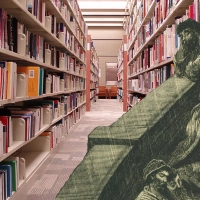
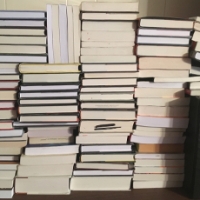

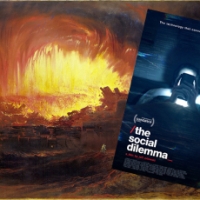
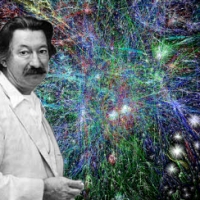
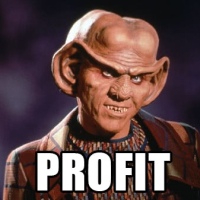



Hello Zach,
An interesting study in contrasts between the two iterations of doomsaying. The first, leading to resignation, apathy, complacency and nihilism; the second leading to vigilance, action and some sort of at least acceptable outcome.
As I read the piece I Had a song buzzing around in my head, one verse of which reads:
I’ve seen the nations rise and fall
I’ve heard their stories, heard them all
But love’s the only engine of survival
I can think of no better contemporary Cassandra than the late Leonard Cohen, whose rendition of The Future is beyond prescient. His song Democracy is a close second in its fidelity with our present circumstances.
Performance here: https://www.youtube.com/watch?v=x7NSJVGGKXA
Lyrics here: https://www.maartenmassa.be/CohenChords/index.htm
This article is exactly why I subscribe to your blog. Thank you.
Pingback: A Hell of a Year – Reflections on 2020 | LibrarianShipwreck
Thank you for a fascinating article.
Pingback: Broom-Scrolling? Assume-Scrolling? Bloom-Scrolling? – what comes after Doom-Scrolling? | LibrarianShipwreck
Pingback: Theses on Technological Pessimism | LibrarianShipwreck
Pingback: Look Around – Yet Another Piece about “Don’t Look Up” | LibrarianShipwreck
Pingback: “I’m so sick of Y2K!” – A review of Y2K: The Movie | LibrarianShipwreck
Pingback: Singing About the Dark Times – Theses on Doomerism | LibrarianShipwreck